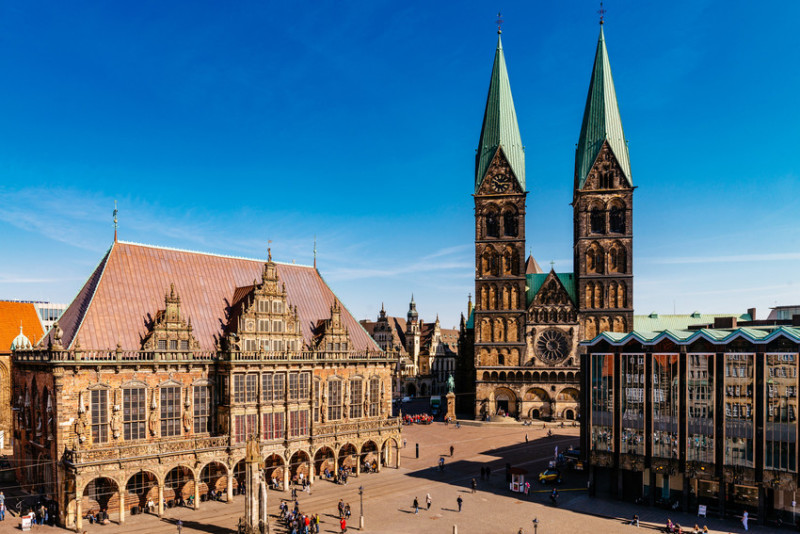Bremen’s town hall – a UNESCO World Heritage site
Tourism
Bremen’s town hall, or Rathaus, has survived undamaged for 600 years, and has been on the list of World Heritage sites for ten years. For Bremen, it’s a symbol of the independence of the city state and its citizens, and this autonomy has always been influenced by the city’s proximity to the Weser river and the sea.
It’s so often the case – you live in a city where the most famous places of interest are within easy reach, yet you’ve never been to see them for yourself. In Bremen, the tram runs directly between two places of historical interest that were declared UNESCO World Heritage sites in 2004 – the statue of Roland, medieval symbol of the citizen’s independence, and Bremen’s Rathaus.

I’ve often admired the Rathaus in passing, but today I’m actually going on a tour of this 600-year-old beauty. My tour guide will be Karl, only 23 years old but already an expert on Bremen’s history.

“Over the centuries, this building has been extended and has remained undamaged by war,” Karl says as he leads us up the stairs of the early 20th century extension. It immediately becomes clear how important the river Weser has been for Bremen and its citizens. The old pictures on the wall feature sailing ships, and a lamp made from a whale’s jawbone hangs from the ceiling – whales have been prized by humans for centuries.
Within a few more steps we enter the Upper Hall of the town hall. At eight metres high, it is itself reminiscent of a ship: the floorboards creak at every step, and ornate oak beams run across the ceiling above. Suspended above us are model warships, replicas of the ships employed to protect the Hanseatic fleet. Their miniature cannons used to be fired during festive receptions. But those days are over – apparently after some of the windows were damaged, Karl explains.

The hall is still used for receptions and events, such as the annual, seven-hour-long Schaffermahl banquet. The banquet, which was first held in the 16th century in support of the widows and children of sailors, has retained its community-based character to this day. The 300 guests have traditionally all been men – the first and only exception has been German chancellor Angela Merkel, who was a guest of honour.
Even if you’re not one of the captains (both male and female – another exception), politicians or businessmen invited, you needn’t miss out. The Ratskeller restaurant beneath the Rathaus serves the same traditional menu on the day: air-dried fish and kale. All that remains to be said is: guten appetit!
Success Stories
Bremen – Germany's greenest city
The greenest major city in Germany is Bremen - with an average of 60 square metres of sports, leisure and recreation space per person. Parks, sports facilities, but also water areas invite you to relax from the hustle and bustle of the city every day.
Learn moreBremen as a Street Art City: when a City becomes the Canvas
From gigantic murals to graffiti hidden in the alleyways: Bremen's street art scene is a vibrant expression of creativity and diversity. With the Street Art Cities app, anyone can now discover this world on their own - and experience the Hanseatic city from a new perspective.
Learn moreSpending the night in a former rice warehouse: the John & Will Silo-Hotel in Bremen's Überseeinsel district
Bremen has had a new hotel since the first of August 2024 – but not just any hotel. With its unique architecture and innovative sustainability principles, the John & Will Silo-Hotel by Guldsmeden stands out as a flagship project in Bremen's Überseestadt district. A place that offers far more than just accommodation and can play an important role in Bremen's tourism.
Learn more